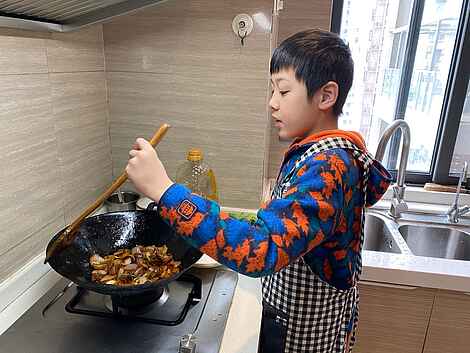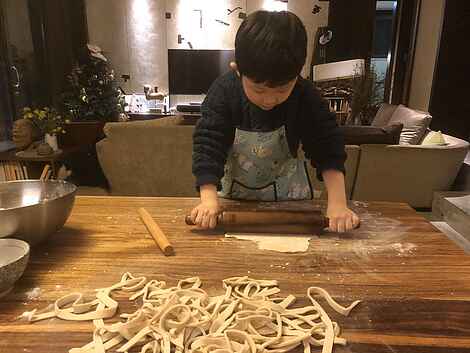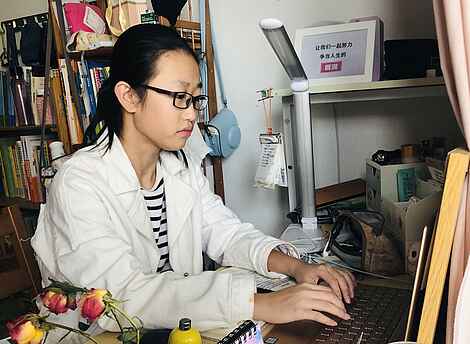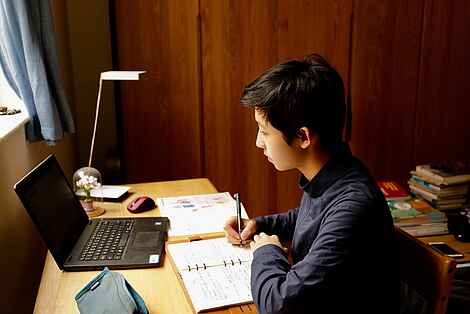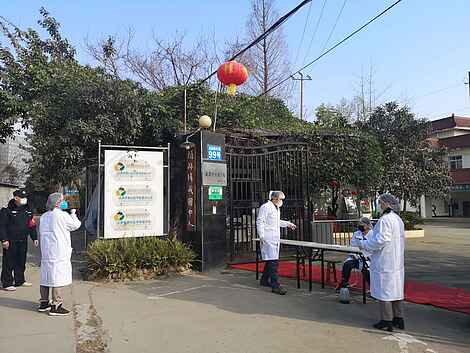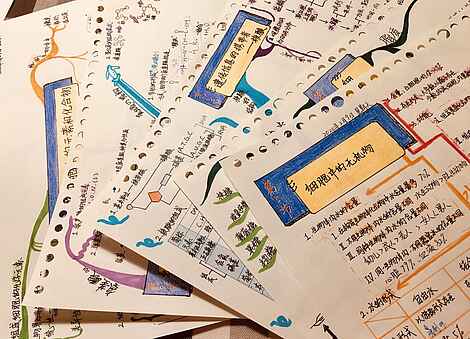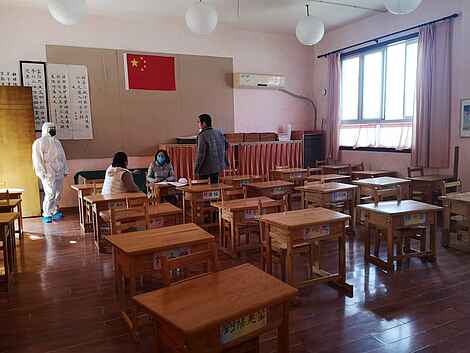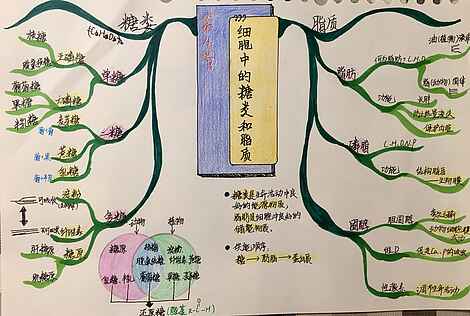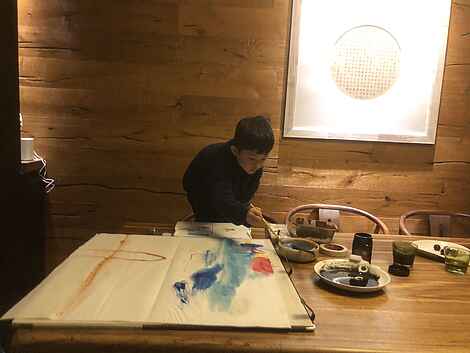Zewu Li, teacher Chengdu Waldorf School, China
The coronavirus pandemic began in China and has now spread over most of the world. Now the number of cases of the infection has risen to over a million with more than 50,000 deaths! And the tragedies continue. I write with deep sympathy towards those who have died, or who have experienced the loss of loved ones. And we signal our high respect towards doctors and nurses everywhere.
It is a strange phenomenon that billions of people all over the world are asked to keep a ‘social distance’ from each other, to isolate from each other and to stay at home. Many countries have locked themselves down. Many schools are shut down and billions of children are staying at home during this coronavirus. And, as far as we can see, this will be a lengthy period.
How, then, to help the children pass through this critical phase and how to help them with their learning? These have become urgent issues in many parts of the world. Below, I share some limited, recent experiences from China.
Our last winter semester ended on 16thJanuary 2019. Following the tradition of the lunar calendar, we had our ‘Spring Festival’ holiday and everyone was happy to end the school year and then, people travelled home or went abroad as holidaymakers. After about a week, it was announced that Wuhan was in lock-down due to a virus. My wife and I were in Ho Chi Min City on holiday. Then, soon after, the questions began. Schoolteachers in public school and private schools, were asked to gather lots of information about the pupils and students from their parents: Where they are now? How is the family situation? Has any family member returned from Wuhan? Has anyone in the home had the infection, or the virus? Along with the demand for information, came directions and suggestions: STAY AT HOME! DO NOT GO OUT! WEAR A MASK! WASH YOUR HANDS! And also, the authorities asked: ‘What kind of help do you need?’
Collecting all this data and statistics was a huge amount of work, and very tedious. Our schoolteachers at the Chengdu Waldorf School worked alongside the members of the administration team to collect this information. So they did in public schools too. Imagine, there are 276 million school students in China (2018). Class teachers had to make an immediate response. In Chengdu Waldorf School, once the information had been collected, it was sent to educational bureau of Jinjiang district. There are about 200,000 school students in the district where Chengdu Waldorf school is located and 1.7 million children in the city of Chengdu.
By the 2ndof February, my wife and I were back in Chengdu and the entire country entered a phase of ‘lock down’. Keeping one’s distance is a very effective way of stopping the virus spreading, although it does make life inconvenient, with a loss of freedom in the activities that you can do. People were counting the days and hoping, in sadness, suffering and warmth, for a return to normal life.
The 17thFebruary 2020 was the last day of the month-long holiday, but return to school. was not possible due to the virus. About the 7thFebruary, 10 days before the re-start, we were notified by the authorities that the holiday would continue.
After one month, some parents were already heart broken. The prospect of two months filled some with despair. And three months? Oh My! After one month, some were rather happy to have longer holidays and then some play-fighting and bickering began between father and mother, and between parents and children. But, yes, the general message was that people needed to take it easy. Obviously, we – the schools and the teachers - needed to do something. There were three things on which we focused:
1. Suggestions for children staying at home
2. Learning at home and studying online.
3. Preparation for when school re-opens
1. Suggestions for children staying at home
Besides taking protection measures against the virus, there were several points to address.
- To cherish and enjoy family time.
It is sadness what is happening in the world because of the virus and we have to be in isolation, but also it provides great opportunities to improve the relationships between parents and children.
- To keep up good mood.
What is happening in the world is sorrowful. This is a kind of Pandora story. But in that story is still a hope. Find the positives and do not complain.
- To create possibilities for parents to show a positive influence.
Now there are many possibilities for parents to influence their children. The offspring can learn from their parents’ lifestyle, what parents are interested in, how we do things, what is valuable for life from our perspective and so on. But do not think that these parents were meant to be teachers every day. And don’t think, parents, that you must talk all the time. You can show by doing. Also, parents can talk about this epidemic in a suitable fashion, of course, to share different perspectives and opinions.
- To maintain a good rhythm at home. However, it is easy for people
give up their regular daily rhythms when they have more free time. Healthy rhythms shape good living and strengthen not only the body, but also our energy levels.
- To do things together.
Find something interesting and do it together: cooking, cleaning, exercise, watching the news, reading. Reading is a very good past-time, of course, making things together too. Better communication, collaboration, and a growth in shared understanding will happen through doing things together. To re-call something together can be fun! Play cyber-games together, but not too much, especially if you or your children have strong inclinations in this direction.
- To maintain communication with others. With Grandma, cousins,
teachers, friends. Keep the warmth flowing between each other. The Chengdu school has a community of nearly 1000 students and teachers. We held several online talks about supporting parents and supportive parenting and had some interesting question and answer sessions. We offered parents a range of perspectives to parents to help us understand the situation, to gain knowledge of the virus, we responded to questions regarding hygiene and psychological problems. Other more concrete questions were tackled: How to deal with internet? How to tell stories? How to read, or read together? How to calm children down when they saw lots of death or heard things that were sad or ugly?
We got some very positive feedback. The school and teachers kept in communication with the parents. People helped each other not only with information and methods, but also regarding materials.
The lock-down situation in China continued. There are about 80 Waldorf schools and near 400 Waldorf kindergartens in China and by now, all were facing the prospect of the coronavirus in their communities. Some Waldorf organizations organized a range of activities for the China Waldorf community. The China Waldorf Forum (CWF), China Early Childhood Education World Forum (CECEF) and Shan Hai Yuan Charity Foundation have organized a series of 12 online courses for the public. The topics included parenting, daily routines in holiday time, art, indoor activities, psychological health during Coronavirus, reading, and housework.
Governmental and educational authorities at different levels also issued restrictions, requirements, suggestions, and help to the public. Following and collaborating with that guidance was also important.
2. Learning at home or online study
The words ‘Web Sensation’ or ‘Web Celebrity’ took on an air of reality when online learning was put into real action. If I ask, who were the internet celebrities in those days, the answer would be: TEACHERS, who got to grips with online teaching approaches, like video broadcasts. No matter who they were and what kind of environment they were in, they had to be present and dressed to present video casts as they began teaching online. There were lots of jokes about that due to the technical problems and rudimentary skills in using the equipment. Many teachers and children spent the first lessons doing nothing but adjusting the equipment. One teacher presented a big face on the screen and talked for 20 minutes and finally found speaker was ‘off’ and his children were looking at his mime show! Or, while another male teacher was talking, his wife showed up and did some funny things. And for one teacher, her class began with everyone there, but more than half fled during the first half of the lesson without her noticing. But, all in all, children had to learn at home or online because the virus is not a one-day business but will go on for quite a while and people saw no hope of re-starting actual school.
So, how did we do online learning?
Our online learning is based on different level of classes. And different schools have been doing it differently. Also, Waldorf schools did it differently from public schools.
In general, physical activities, arts, reading, and practical work in the family all went ahead. Regarding academic studies, we did not do anything at kindergarten level. We focused on providing advice online for the parents.
For Classes 1-3, we recommended no online academic studies. Teachers made some audio recordings of rhymes, poems and songs and shared them with the parents, who were invited to learn them with their children at home.
In Classes 4-6, some schools gave two online classes each day. Some schools did not do this, but made online interview, or chatting with individual children once a week, but no lessons online.
In Classes 7 and 8, students of some schools had regular lessons each day. Some did project-based learning. Some schools in certain regions used public online learning course.
As for the high school, students had regular sessions of online learning, dealing with assignments. Also, they did some artistic work at home. Actually, they were quite busy!
In some schools, in Classes 9 and 10, teachers designed project groups with several students in each group. They reported and communicated with each other every day at 8am. Teacher gave about 40 minutes of online guidance. The whole class met through video conferences every Monday through the ‘Zoom’ platform.
In Chengdu Waldorf School, from February 17thon, teachers set up a daily working rhythm with children. This was mainly conducted by class teachers, with the support of subject teachers. Subject teachers mainly provided class teachers with video clips they made for the parents of the lower classes and the students of the upper classes. Support offered included the steps and stages of a handcraft project, or a piece of music, or, tongue twisters in foreign languages.
Gradually, once the working rhythms were established, the class teachers invited subject teachers to work directly with parents and children online at certain times. This strengthened the connections between the subject teachers and the individual families and the children.
School will be re-open again in a week’s time. The “online teaching” will end. But teachers will do follow-up research work based on their experiences and observations during the 6-week phase of working online with parents and children. Each school will need to consider a variety of factors such as regional health, curriculum continuity, individual class situations and individual student attitudes. In response, the teachers will need to find appropriate teaching methods and materials for their own classes.
Class teachers have played a big role in all of this. They maintained good communication with students and their families. They assigned homework tasks, with appropriate standards and criteria, including completion times. This information was designed to be shared with parents and students. In some schools, before implementation, each class teacher submitted the homework tasks and planning to the teachers’ committee.
Subject teachers also had roles to play. It is difficult to teach some subjects online, like sports, arts, or indeed, the sciences which need laboratories and practical demonstrations. But they tried their best to do what they could.
My wife is a Class 4 teacher in a nearby public school. I often watch her teaching ‘at home’ in the morning. Her work is mostly to ask or answer questions online. Most of the time, if she wants to see the children’s face, she can use ‘Zoom’. General governmental teaching guidance is provided: not more than 20 minutes for one lesson; curriculum content is recorded by very experienced teachers for children to watch. But teachers can do teaching themselves as well. There are certain worksheets that the children must undertake. Besides teaching, my wife fills out many forms. This part is very heavy.
How is virtual teaching?
There is a debate in China about ‘virtual’ teaching. It is not just Waldorf colleagues who discuss and question the ‘Ahrimanic’ materialism and controlling nature of the digital medium; the public does too. People worry about the negative effects of the internet: whether children should be free to access the internet; whether there should be limits placed on virtual games; the question of physical and psychological problems; the harmful and troubling information from cyberspace and so forth.
As an educator, I keep close eyes on these phenomena. I would say we must hold in mind the different development stages of the children and young people and we need to notice this very carefully. For many lower school children, it is better to say “foster good habits” rather than ‘learn’ material. And children need to fill the time well! But for higher class, it is one way of learning, amongst others.
3. Preparation for School re-open again
After about two months of lock down, from 23rdof January to the end of March, this horrible virus is beginning to fade away. It seems that things are returning to normal. You can go with your friends to see peach flowers in the valley; children can play together with their friends in the park; you can have face to face meetings with your colleagues; traffic-jams have appeared; in the fields, you can hear the sounds of tractors; restaurants are opening their doors again and people can have decent food. But, as yet, no cinema, nor karaoke nor school. And of course, there are still masks everywhere.
Chengdu is the capital city of Sichuan province. The province is famous for hot food. Very recently, one of my friends, who is a Principal of a very large school, participated in a high level, inner circle provincial meeting and told me that school would re-open again on certain dates. Then, the provincial government announced that Class 12 students will be entered for the Gaokao, (the national exam, coming in July, one month postponed this year), would go back to school and face-to-face classes on 1stof April. Students in Class 9, who sit the standard tests at age 15 will return to school on 7thApril and other classes of primary, middle and high school will go back on 13th of April. Adult training and education will not return until the 18thApril. As for Kindergarten children, we are waiting for official notification.
The whole strategy for preparing to re-open school is step by step. There are lots of regulations to consider: temperature check equipment, sterilizing of materials, facial masks, of course and quarantine spaces; how to go to school, the seating formation, how to play and be social, how to eat and so on. It is complicated and there is much to plan. I think the government, the schools themselves, teachers and families all worry about the virus, but we do what we can do and how to do our best. It will work for sure.
Recently, we gathered a bunch of people to give readings and offer guidance to parents and children on how to read and what kind of books and stories to choose from. We have to provide food to nourish the soul. We got some very good feedback and we are happy. I told stories of ancient Greek myths online. The story of Epimetheus is probably familiar to many. Epimetheus, the person with hindsight, was the brother of Prometheus, the person of foresight. He was granted a beautiful wife from Zeus. Her name was Pandora. She opened her box and bad things came out: illness, pandemics, hatred, catastrophe. Then, the world became devil-like. Now, it is a really difficult time for the whole world. But one thing remains - HOPE. Yes, we never ever lost our hope! And our hope will be fulfilled when we are fully conscious of the nature of reality, when we connect with each other and, with the whole world.
